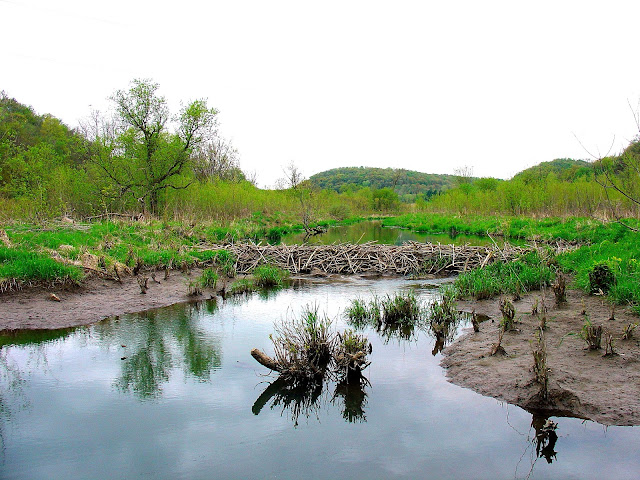They typically back up water when they are first built and mean lots of trout for the angler.
The WDNR shocked a huge brown out of this dam a couple years running. The land owner told me about the 29 incher he had on his wall that he discovered while he went along on a shocking trip. This stream had a thriving brook trout population but is protected these days due to gill lice. No brookies are allowed to be harvested due to the scourge that is gill lice.
The PH changes in long established dams and is typically detrimental to trout. Dams also block seasonal spawning. Dams are breeding grounds for gill lice. The biggest male small stream brown I have ever seen was caught behind this dam.
I caught 24 brookies at this dam and never moved from my casting spot. This is one of the streams that no longer supports brook trout due to gill lice.
The beavers have had this dam for 2 years now on the headwaters of one of my favorite streams. The spring that supplies the life to this stream is only 80 yards upstream of this massive beaver dam. The water spreading out over a larger area gives the water more surface area and warms the water way artificially and it could have long term detrimental effects on the trout population.
Dan Braun and I had a veritable field day behind this small dam slamming brown after brown.
Not a single trout was caught behind this warm stagnant dam this day.
Beaver dams long term are not an angler's friend. Beaver runs can be way dangerous to step in and the pongee sticks the beavers leave behind can impale an angler.
Beaver dams are not good for the stream and you should contact the WDNR and tell them about dams you have found.
Gill lice thrive in beaver dams.
Please contact the WDNR when you find a beaver dam.













 Reply With Quote
Reply With Quote